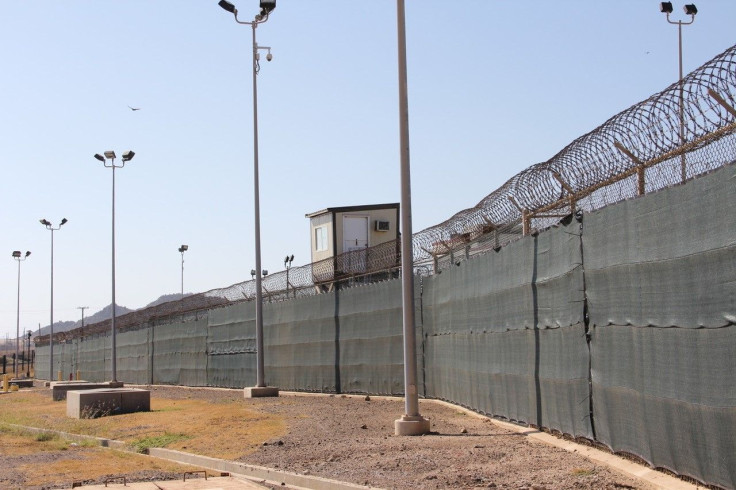Guantanamo Bay Prison Facts: Trump Signs Executive Order To Keep It Open

President Donald Trump signed an executive order Tuesday to keep the military prison facility in Guantanamo Bay, Cuba, open.
The executive order titled “Presidential Executive Order on Protecting America Through Lawful Detention of Terrorists,” stated that a previous executive order which ordered the closedown of the United States Naval Station Guantanamo Bay was “revoked.”
It added that the “detention operations” at the prison facility would take place in accordance with the U.S. and international law which included the Detainee Treatment Act of 2005. The order also stated that along with the “detention operations” at the prison, new detainees might also be sent to the facility “when lawful and necessary to protect the Nation.”
According to a report by USA Today, Trump, while declaring the order in a joint address to Congress, stated that he ordered Defense Secretary James Mattis “to re-examine our military detention policy.”
“I am also asking the Congress to ensure that, in the fight against ISIS and al-Qaeda, we continue to have all necessary power to detain terrorists — wherever we chase them down,” Trump added.
The Guantanamo Bay camp was established in 2002 under the administration of then U.S. President George W. Bush.
Secretary of defense at the time, Donald Rumsfeld, stated during a Department of Defense briefing in 2002 that the prison camp was set up to detain extremely dangerous people and also to conduct interrogations in a controlled environment.
Rumsfeld said the detainees in the prison were given proper facilities like water, clean clothes, culturally appropriate food and also right to practice their own religion. He also claimed that the prison was visited by the International Committee of the Red Cross in order to justify that the facility was adhering to human rights ethics.
However, it garnered criticism following reports which alleged that prisoners were subjected to force-feeding and indefinite detention at the facility.
According to a 2013 report by Alternet, Wells Dixon, a lawyer who represented five detainees of the Guantanamo Bay prison said referring to a hunger strike at the facility, “The men are not starving themselves so they can become martyrs...They’re doing this because they’re desperate.”
“They’re desperate to be free from Guantanamo. They don’t see any alternative to leaving in a coffin. That’s the bottom line,” added Dixon.
On force-feeding, a 2013 Miami Herald report said that, the American Medical Association (AMA) wrote a letter to Pentagon which stated, “ force feeding of detainees violates core ethical values of the medical profession.”
The letter written by AMA President Jeremy Lazarus stated, “Every competent patient has the right to refuse medical intervention, including life-sustaining interventions.”
The case of force-feeding got more spotlight when one of the inmates of the prison, Samir Naji al Hasan Moqbel, wrote an op-ed in The New York Times titled, “Gitmo Is Killing Me,” in April 2013.
In the article, Moqbel wrote that he was detained at Guantanamo Bay for 11 years and three months and that he was never charged with any criminal activity nor was he given a trial.
He described the way he was force fed via a tube placed up his nose. “As it was thrust in, it made me feel like throwing up. I wanted to vomit, but I couldn’t. There was agony in my chest, throat and stomach,” Moqbel wrote.
“I would not wish this cruel punishment upon anyone,” he added.
According to a report by Human Rights First, a U.S.-based non-profit and non-partisan organization, there were 41 detainees at Guantanamo Bay prison at present. The total number of detainees who were kept in the camp since its establishment in 2002 was 780. The report, which was updated in Dec. 2017, stated that only one of the detainees till now was sent for prosecution. All the 41 detainees were imprisoned for more than 10 years.
The executive order by Trump reversed an order signed by former President Barack Obama which aimed to shut down the prison facility following criticisms from human rights groups, reported USA Today. Obama failed to completely close the facility, partially since Congressional Republicans blocked the attempts made to move the detainees who could pose a threat to the country in future.
© Copyright IBTimes 2024. All rights reserved.












